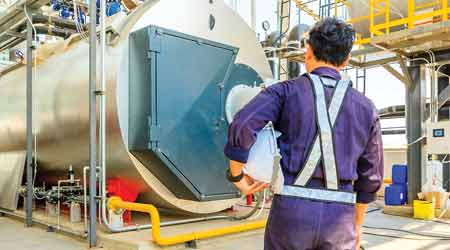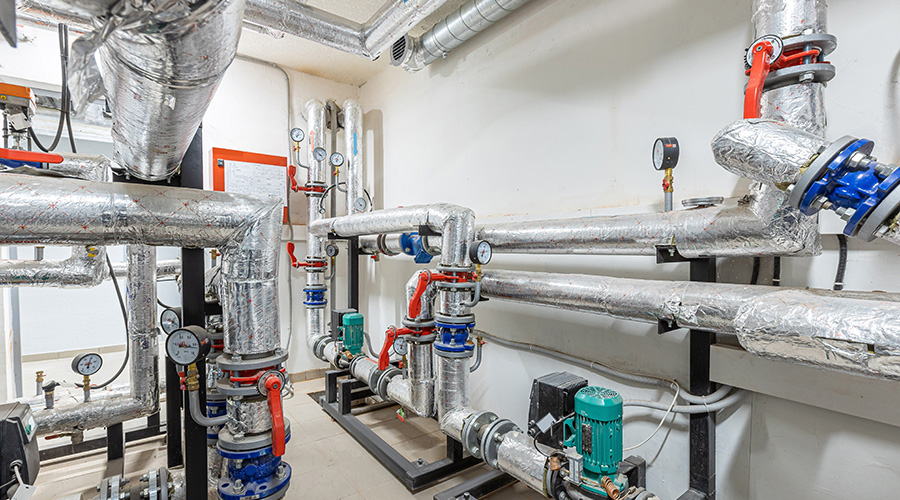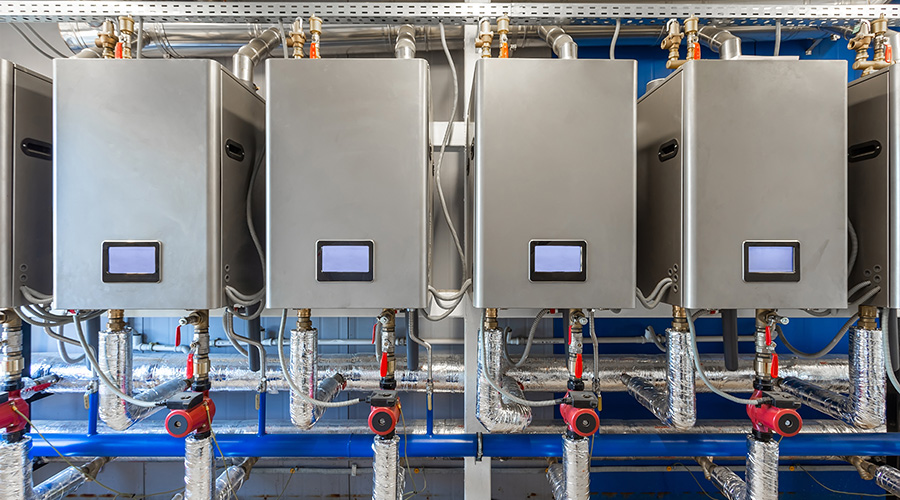 Deciding whether to repair or replace a boiler begins with understanding the unit’s condition, so technicians should carefully inspect the equipment.
Deciding whether to repair or replace a boiler begins with understanding the unit’s condition, so technicians should carefully inspect the equipment.Boilers and the End-of-Life Decision
Managers deciding whether to repair or replace a boiler need to gather, analyze and present solid data to make
a smart decision
Maintenance and engineering managers play an important role in the energy-efficient operation of HVAC systems and components, as well as their eventual replacement. They are responsible for the ongoing testing and monitoring of the systems’ performance, and they ensure front-line technicians have access to a reliable supply of replacement parts and tools to perform needed repairs.
Boilers are essential components of these systems, and eventually, their performance lives near the end. As this time arrives, managers need to monitor boiler condition and operation to determine the most appropriate time for replacement. Before getting into the metrics of a boiler replacement, a closer look at boiler inspection and maintenance is in order.
Looking for trouble
Making the decision on whether repair or replace a boiler begins with understanding the unit’s condition, so technicians should inspect the equipment. A commercial boiler should be drained and opened annually by a qualified boiler mechanic, preferably one who has been factory trained by the manufacturer.
Whether the unit is a fire tube boiler or a water tube boiler, annual inspection is the first and best line of defense against a catastrophic failure. Where multiple boilers are involved, managers can identify a time of year to take one of the boilers offline for inspection.
Once the boiler is opened, technicians need to check key components to determine the boiler’s operating condition. What condition are the tubes in? Do the tube sheets look warped? Is there any noticeable discoloration to indicate hot spots? Were any existing tubes plugged and, if so, how many? All of these items can help managers assess the condition of the boiler and begin the repair-or- replace assessment.
What about cast iron and condensing boilers? Cast iron boilers typically go from working fine to suddenly cracking, typically due to thermal shock. Cracking tends to happen when it’s cold outside and the boiler is essential. The reason cast iron boilers last as long as they do is that, except for the burner, they are large hunks of cast iron.
Maintaining cast iron boilers is more subtle. Water chemistry and operational temperatures are the keys to their longevity, so managers need to make sure they have a trustworthy water treatment professional service the facility and monitor supply and return temperatures regularly.
Operators should avoid thermal shock at all times. Also, if the boiler water temperature is set much below 150-160 degrees, acidic condensate from the flue gases often will cause unwanted corrosion and premature boiler failure.
Technicians should monitor condensing boilers similarly to cast iron boilers. Supply and return temperatures, manufacturers’ recommended maintenance procedures, and combustion air and flue conditions are vitally important for the proper and efficient operation of these boilers.
Related Topics:














